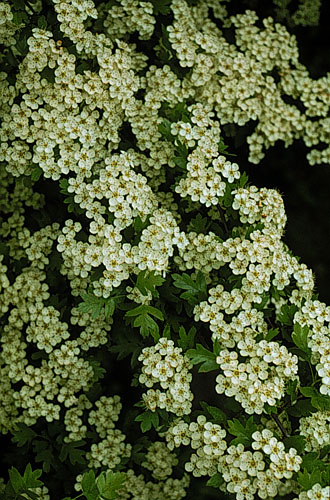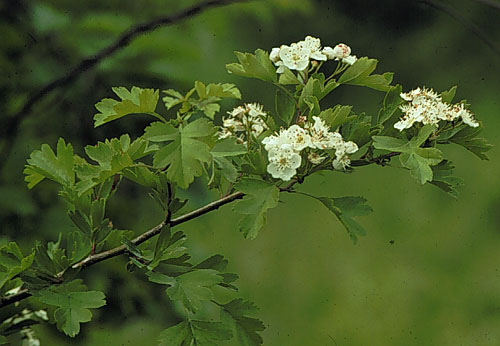Crataegus monogyna
Singleseed Hawthorn
Rosaceae
ExpandHabitat
- native to Europe through Western Asia
- hardy to zone 4
Habit and Form
- a medium-sized deciduous tree
- 20' to 30' tall
- branches tend to be slightly pendulous
- densely branched, rounded crown
- slow growth rate
- medium texture
Summer Foliage
- simple, lobed leaves
- alternate leaf arrangement
- leaves serrated at lobe tips
- rich green leaf color
- 3" long leaves
Autumn Foliage
- not ornamentally important
- moderately showy
Flowers
- small, white flowers
- borne in corymbs
- blooms in May
- short bloom time only 7 to 10 days
Fruit
- a red pome with one seed
- ripens in September
- showy
- birds eat fruit
Bark
- stems are slender and brown
- long thorns along stems
- mature bark is "apple-like"
- zigzag stem pattern
Culture
- easy to grow
- prefers moist, fertile soil
- prune tolerant
- full sun is best
Landscape Use
- specimen tree
- screen border
- prune into hedge
Liabilities
- under used
- hard to find
- powdery mildew
- leaf spot
- thorns
- tends to have many pest problems similar to apple trees
ID Features
- long thorns along stems
- a medium-sized deciduous tree
- 20' to 30' tall
- one seed on fruit
- serrated lobe tips
- broad, rounded tree
- simple, lobed leaves
Propagation
- by cuttings
Cultivars/Varieties
The species fails to perform well in most areas, thus both the species and it's cultivars are rarely offered.
'Stricta' - The most common form, this is a strictly upright plant with narrow habit. Susceptible to disease.

